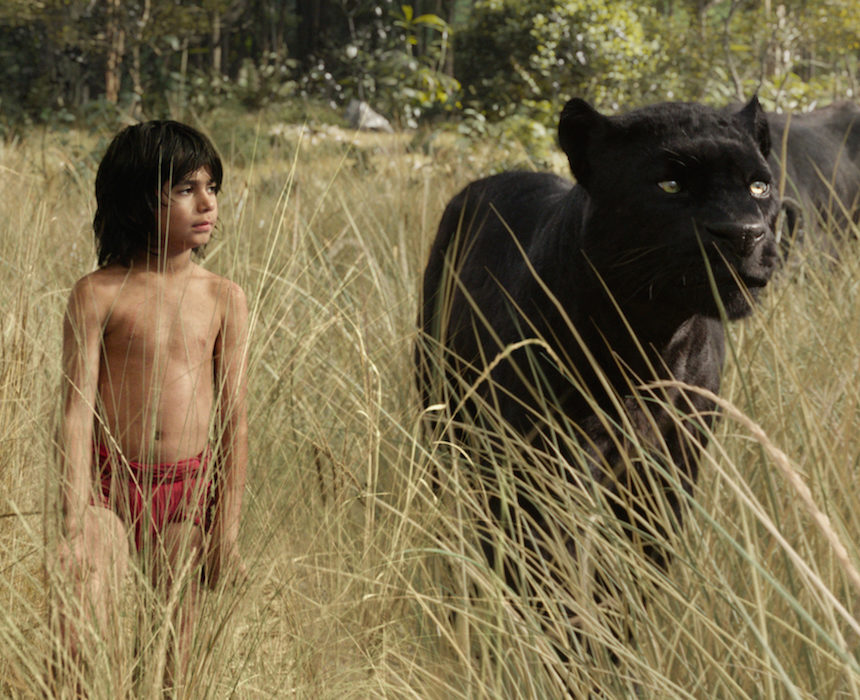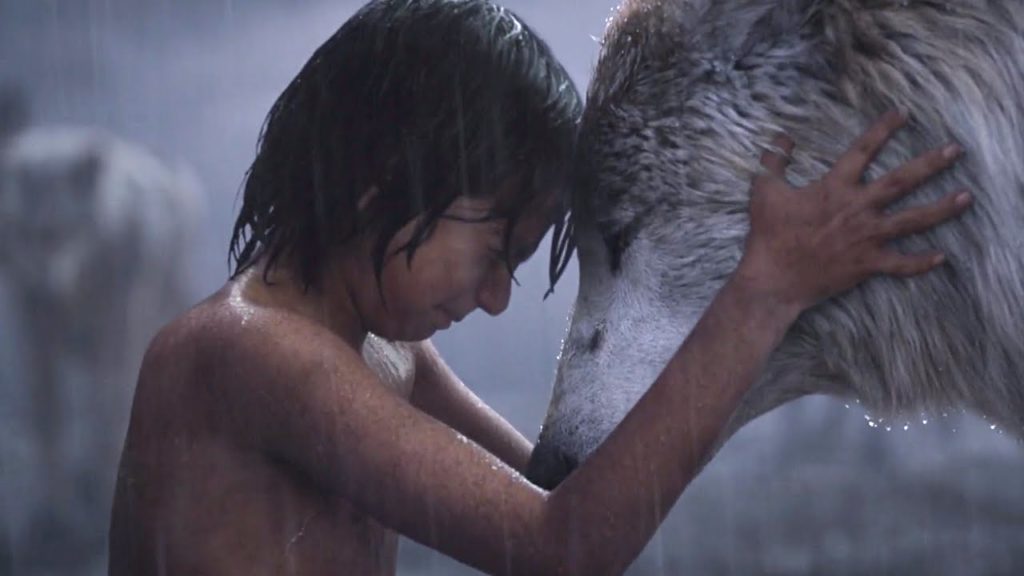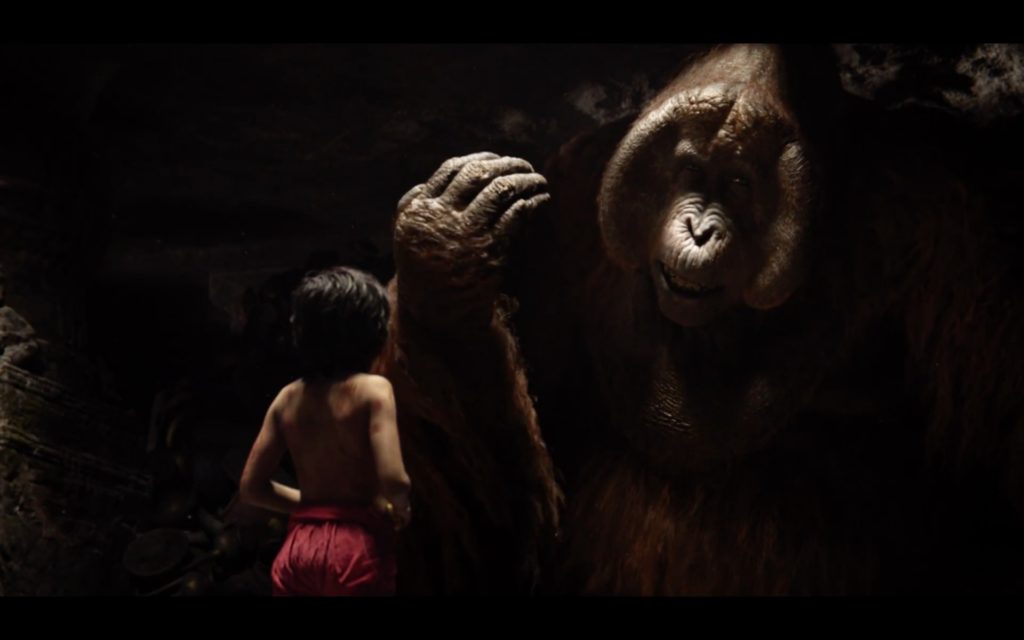As the throwback book closed on the movie just like in the original cartoon, I couldn’t help but think that Rudyard Kipling would have liked Disney’s latest version of The Jungle Book.
I remember reading a while ago (and confirmed today on Wikipedia, so it must be true) that Walt Disney wasn’t happy with the first draft of The Jungle Book. The screenwriters had stuck too closely to Rudyard Kipling’s original stories, which lead to a dark tone for what was supposed to be a fun children’s movie.
Also, the music apparently sucked, since Walt burned all the original songs, except The Bear Necessities, which one report says he tunelessly screamed out like a rabid grizzly while he danced around the smoldering pyre of the previous songwriter’s work.
While director Jon Favreau kept portions of the 1960’s cartoon The Jungle Book, his live action recreation ditches Disney’s lighthearted insistence, sticking much closer to the dark tone of the original stories. Yet despite this change, The Disney Company is still marketing the movie for children. Is that appropriate? Read on to find out.
Like always, this is not intended as a full review, but more as a general overview of my thoughts on the level of propaganda behind the film.
Speaking of propaganda, let’s start with Rudyard Kipling himself. It recent years, it has become a growing hobby to take historical figures and reduce them to one dimensional caricatures of a single trait or belief they held that clashes with modern day coolness. Kipling certainly displayed typical early 20th century English racism again Indians (I shouldn’t have to say it, but. . .actual Indians. From India), and as such has been subjected to that postmortem firing squad. Despite his racism, though, he was clearly a complex fellow, and there’s no doubt that he loved the jungle. That love is on full display in The Jungle Book.
The key to his original work was delving into what he termed as the laws of the jungle, the intricate set of rules that each animal must learn to be part of that complex and often deadly ecosystem. This version of the Jungle Book is about Mowgli coming to understand those laws, along with his place within it. The movie ends with him not being seduced by a preteen vixen “accidentally” dropping her water jug, but by him finally ingraining the law of the jungle in his heart.
That’s no accident Mowgli! Don’t fall for it!
It worked well as a message, trying to show the audience why the jungle is awesome rather than condescendingly preaching to them to keep it safe a la Fern Gully or the million other environmental shows of my youth. And since the message is subtly told, the movie could work on different levels depending on how much of your life you want to waste trying to figure out what the director is actually trying to say.
In other words, I do believe someone could find an anti-human message embedded within The Jungle Book, but it’s not so glaringly in your face that kids will stream out of the theater with dead eyes, fumbling around for the nearest collection box for Greenpeace. Plus the one real human we get to see learns how to coexist with the jungle, human tricks and all.
Is The Jungle Too Harsh For Kids?
Before taking my kids to this movie, I had somehow missed the parental fears about the movie being too dark. My main concern was not whether it would give my kids nightmares, but whether it would be too long. Kella was on a big Cinderella kick (despite that princess being the worst role model) when the live action version came out. That movie managed to drag out a 30 minute concept for so long that I probably would have fallen asleep had it not been for a bored Finley throwing a tantrum beside me. Would The Jungle Book befall that same fate?
Thankfully, no. But it was intense. Kella (4) jumped several times, and eventually retreated to either my or my wife’s lap, quickly turning her head and covering her ears at any of the many scary scenes.
Finley (6) had no such problems. Keep in mind that this is the same kid who freaks out at Rescue Bots for being “too scary.” He does, oddly enough, love Jurassic Park. So I’m not sure what to make of that. He sat enraptured throughout The Jungle Book, waiting with baited breath for the next tiger attack.
I should probably mention that when we went to Disneyland back whenever that was, the only mascot he wanted to see was Shere Khan. He really hates violence and scary scenes, unless it involves animals and dinosaurs.
All that to say I’m not sure if it’s too scary for other kids. I guess your mileage may vary.
On a related note, it is rated PG, which is absolutely correct in terms of language, sexual content, etc. But it’s definitely pushing on that upper border when it comes to violence. Sure, it’s mostly animal violence, less intense than plenty of Animal Planet shows, but something about the animal making verbal threats before plunging his teeth into the other animal’s neck ups the unsettling meter to 11 (though in that particular scene, the victim survives).
This is the jungle. There is death. Mowgli isn’t an orphan for fun, and Shere Khan has the gluttonous heart from Kipling’s short story rather than whatever thorn in his fur drove him to hunt Mowgli in the cartoon. None of that is to say that kids shouldn’t go to the movie, but they should probably be aware of what’s coming.
As a side note, my wife and I agreed that the most disturbing scene of all was Christopher Walken digitized into a giant orangutan singing “I Wanna Be Like You.” Truly the stuff of nightmares.
Finley’s Take: “I liked it all. I especially liked the scary parts. All the scary parts.”
Kella’s Take: “This is too scary. Can we watch the cartoon disc when we get home?”


